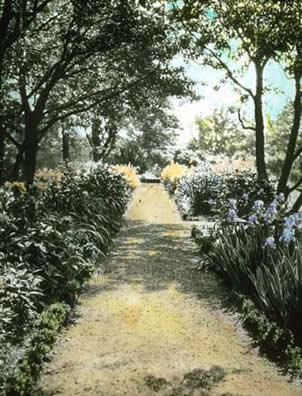
Ellwanger Garden
Rochester, New York
Pear Trees Rochester, New York

Courtesy Library of Congress
history
In 1840, German-born George Ellwanger (1816-1906) and Irish-born Patrick Barry (1816-1890) formed a partnership and purchased seven acres to develop as a nursery and garden on Rochester, New York’s Mount Hope Avenue. Within three years of establishing the Mount Hope Botanical and Pomological Gardens, Ellwanger and Barry released their first catalogue of plants. By 1846, the partners had more than forty acres under cultivation. Over the ensuing decades, Ellwanger and Barry’s holdings grew to more than 650 acres that produced shipping stock for markets across the Midwest, California, Oregon, and even Europe. There also were branch offices in Columbus, Ohio, and Toronto, Canada. As their success grew, so did their experience and, in 1851, Barry published The Fruit Garden, which became the definitive pomological text and would be reprinted over twenty times.
In 1867, Ellwanger bought several acres of land situated on the west side of Mount Hope Avenue, across from the Ellwanger and Barry Nursery. He enhanced the homestead on the site by hiring noted architect A. J. Warner to design additions to the old farmhouse. It was at this time that he began laying out his formal garden. Along with preserving a historic structure, Ellwanger retained the Pear Trees (Pyrus communis ssp.)that were vestiges of the origins of the property as a working farm. The trees, situated in even rows, became the axis on which the garden was designed. Though the garden was formally planned, the plants are arranged in a naturalistic pattern within sometimes amorphous beds, creating the illusion that the garden is truly a work of nature.